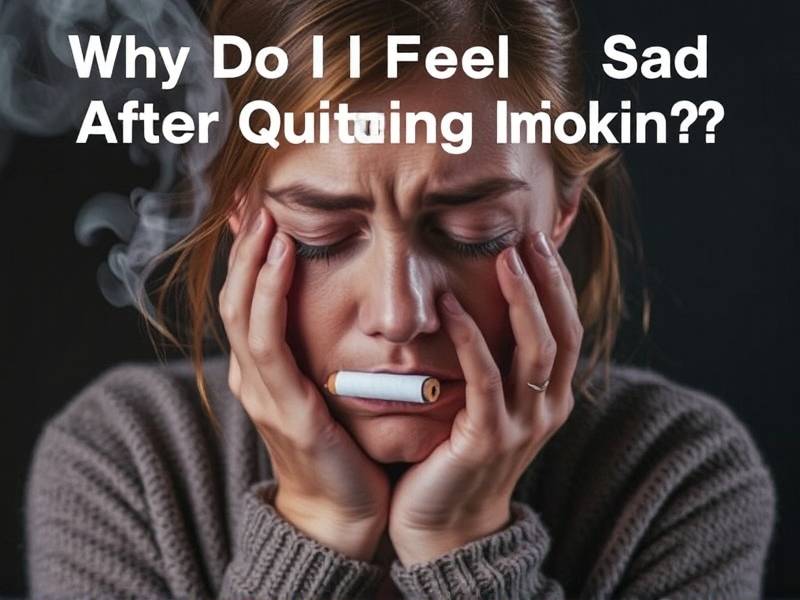Why Do I Feel Sad After Quitting Smoking? The Inside Scoop on Emotional Changes During the Quitting
Why Do I Feel Sad After Quitting Smoking? The Inside Scoop on Emotional Changes During the Quitting Process
Introduction: Quitting smoking is a significant step towards a healthier lifestyle, but it's not uncommon to experience a range of emotions, including sadness, after making this decision. In this article, we delve into the emotional changes that occur during the quitting process and explore why sadness may arise.
Section 1: The Role of Nicotine in Emotional Regulation Nicotine acts as a stimulant in the brain, influencing the release of neurotransmitters responsible for mood regulation. When you quit smoking, these levels fluctuate, leading to mood swings and emotional changes. Understanding this physiological aspect helps explain why sadness can be a part of the journey.

Section 2: Withdrawal Symptoms and Their Emotional Impact Withdrawal symptoms are physical and psychological reactions that occur when you stop smoking. They include irritability, anxiety, and depression. These symptoms can contribute to feelings of sadness as your body adjusts to life without nicotine.

Subsection 2.1: Irritability and Mood Swings Irritability is a common withdrawal symptom that can lead to mood swings. As your body adjusts to lower levels of nicotine, you may find yourself more sensitive to stressors or overwhelmed by situations that previously wouldn't have affected you as much.
Subsection 2.2: Anxiety and Depression Anxiety and depression are also prevalent withdrawal symptoms during the quitting process. These emotions can exacerbate feelings of sadness and make it challenging to stay motivated.
Section 3: Coping with Emotional Changes Dealing with emotional changes during the quitting process is crucial for long-term success. Here are some strategies to help manage sadness:
Subsection 3.1: Seek Support Connect with friends, family, or support groups who understand what you're going through. Sharing your experiences can provide comfort and encouragement.
Subsection 3.2: Practice Relaxation Techniques Engaging in relaxation techniques such as deep breathing exercises, meditation, or yoga can help reduce stress and improve your mood.
Subsection 3.3: Stay Active Regular physical activity releases endorphins, which are natural mood lifters. Find activities you enjoy and incorporate them into your daily routine.
Conclusion: Feeling sad after quitting smoking is a normal part of the process due to nicotine withdrawal symptoms and emotional changes. By understanding these factors and implementing coping strategies like seeking support or practicing relaxation techniques, you can navigate this challenging phase more effectively on your journey towards a smoke-free life.
